Yesterday I reported on the performance of this Schneider enlarging lens on a Cambo Actus-attached GFX 50R wide open. In the corners, the results were good but not great, so I repeated the test with the lens stopped down to f/5.6.
Test protocol:
- Manual exposure, the same for all images
- 12 meters target distance
- ISO 100
- f/5.6
- Subject in the center, the upper right corner, and the upper right corner with a 5 mm fall.
- Manual focusing.
- Six shots at each setting, focusing anew for each shot, picking the best using the Imatest sharpness ranking utility. This method calibrates out focus curvature.
- Developed in Lightroom
- Sharpening set to zero.
- White balance set to gray background on Siemens Star target
- Adobe Color Profile
- Minor exposure adjustments, with same adjustment applied to all images from both lenses, so corner darkening is unaffected.
- Chromatic aberration correction turned off.
- Everything else at default settings
MTF testing using the slanted edge follows.
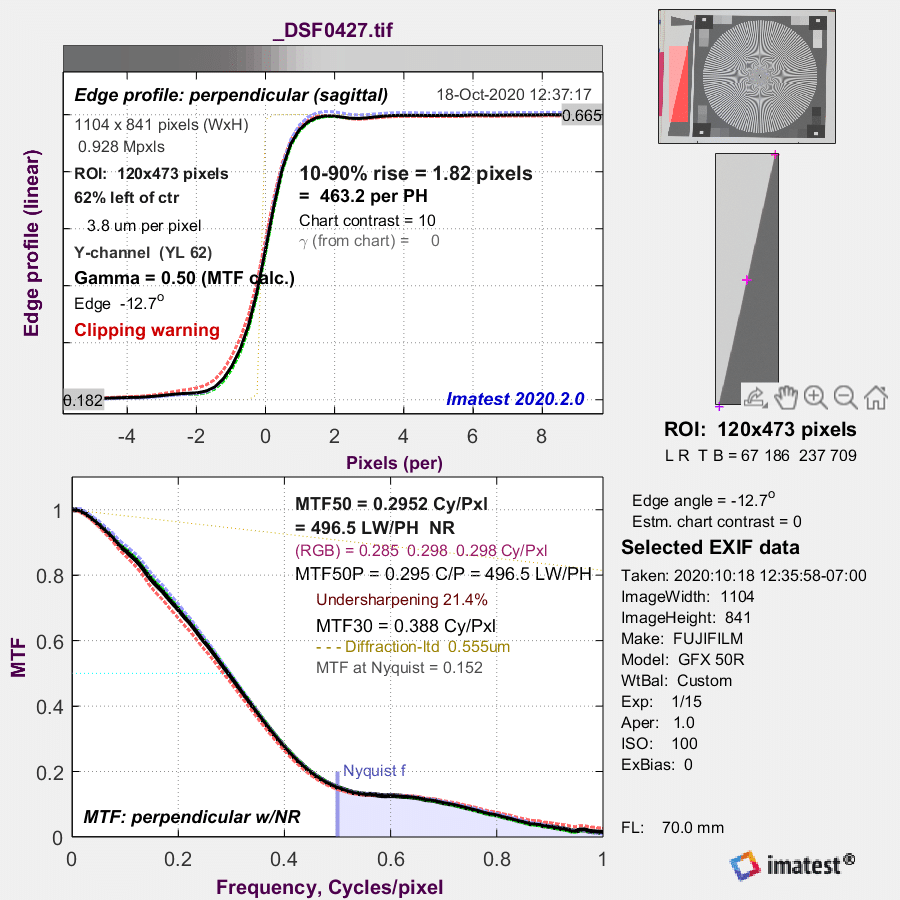
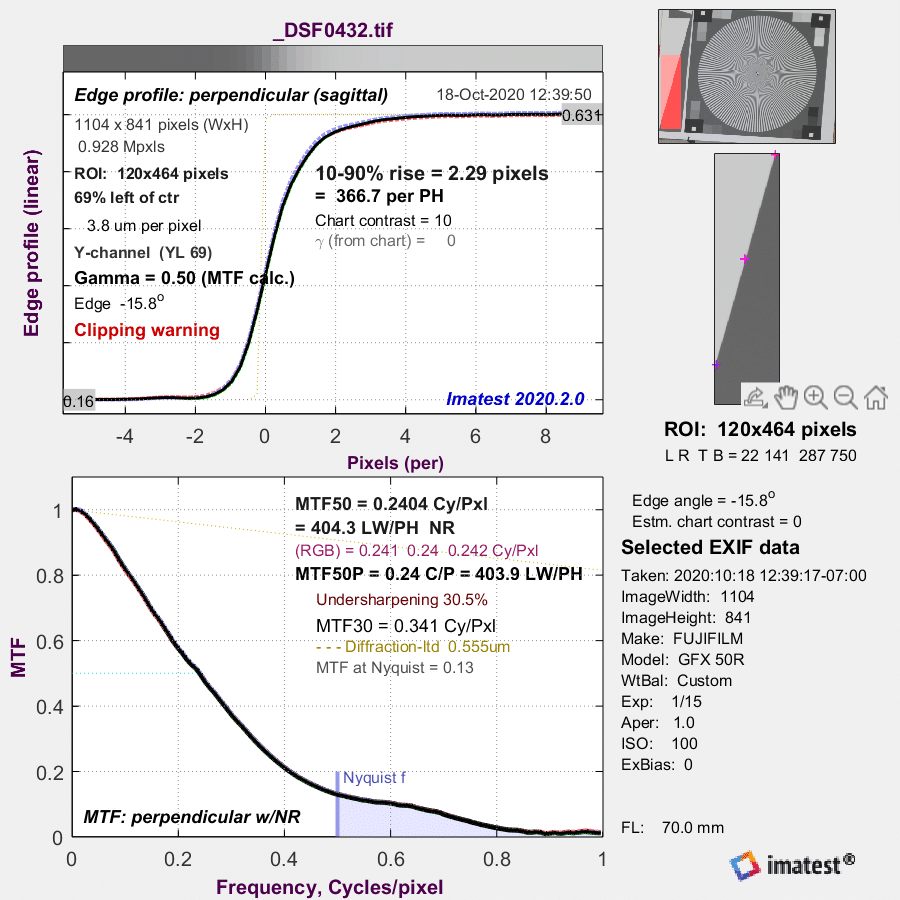
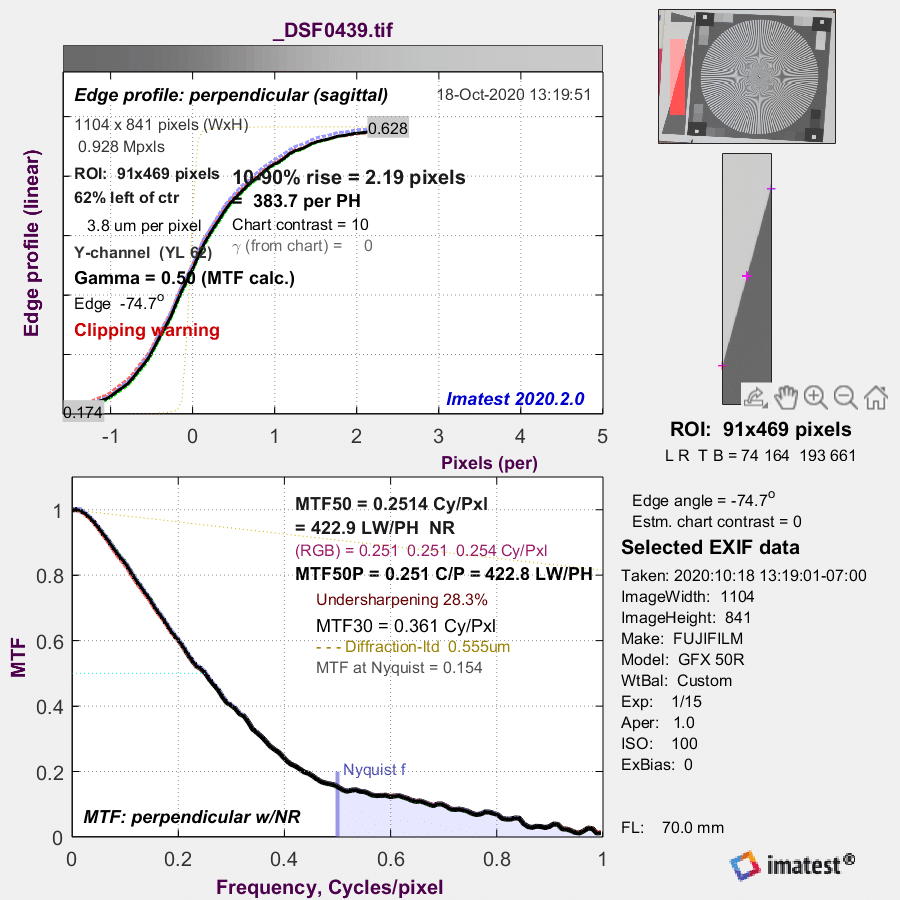
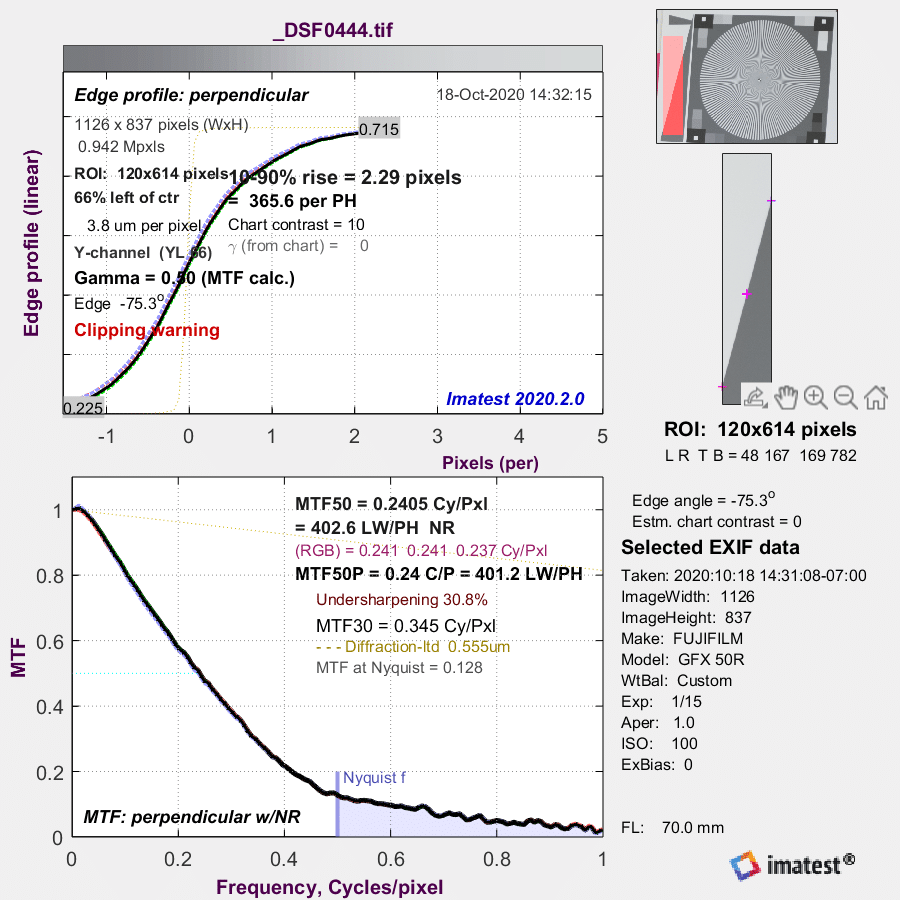
Although the back standard of the Actus is the one you use for rises and falls, the markings on the camera are as if you were moving the front standard. Rise means the back standard drops. Fall means it rises. Ignore the diffraction limited line. Imatest thinks this is a f/1 lens. Now we’re seeing performance that doesn’t fall off much even when we demand a 60 mm image circle which were doing in the bottom chart above.
Stopping down to f/8:
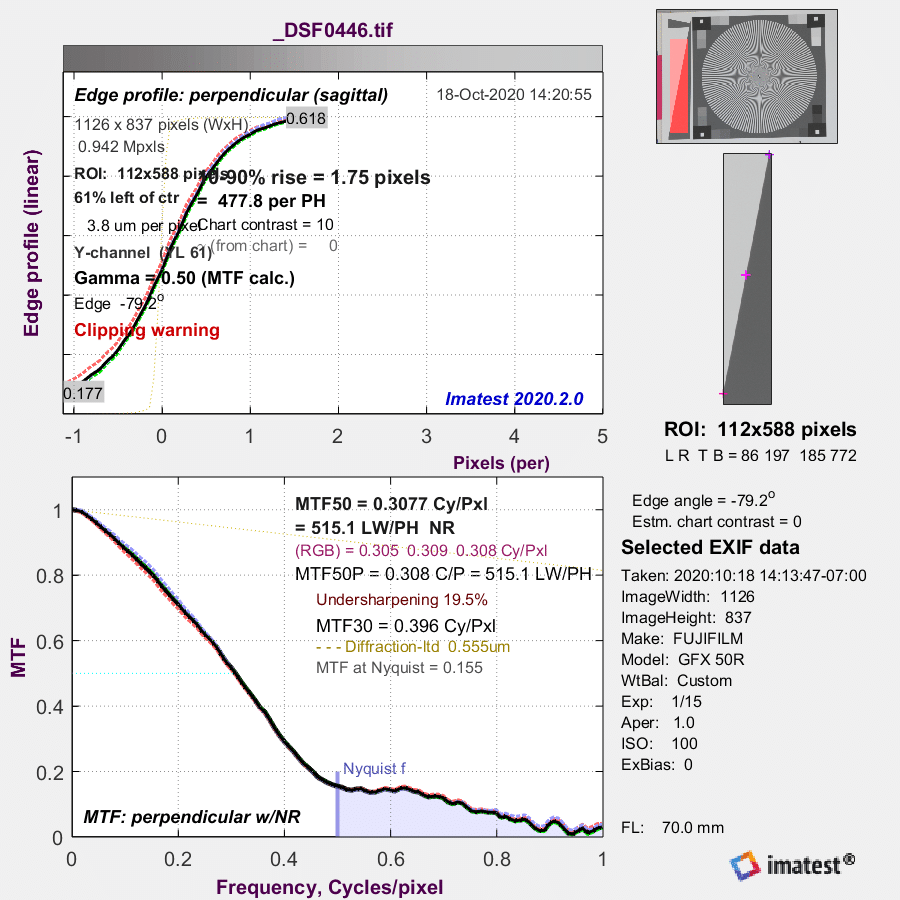
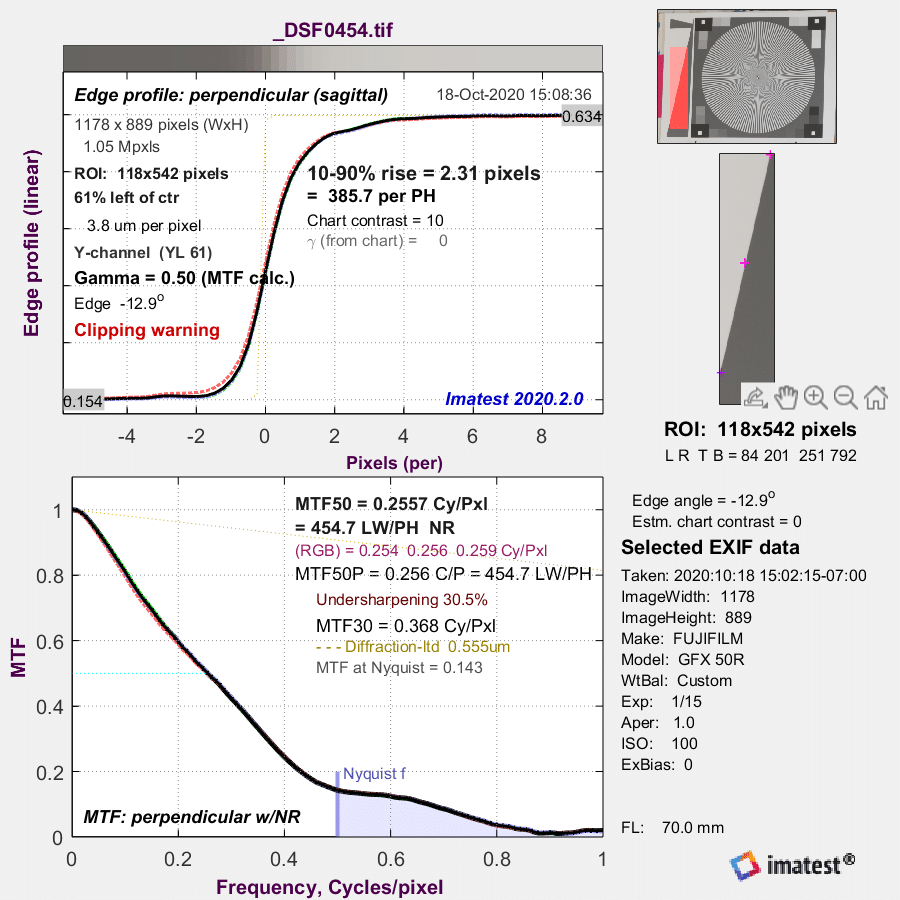
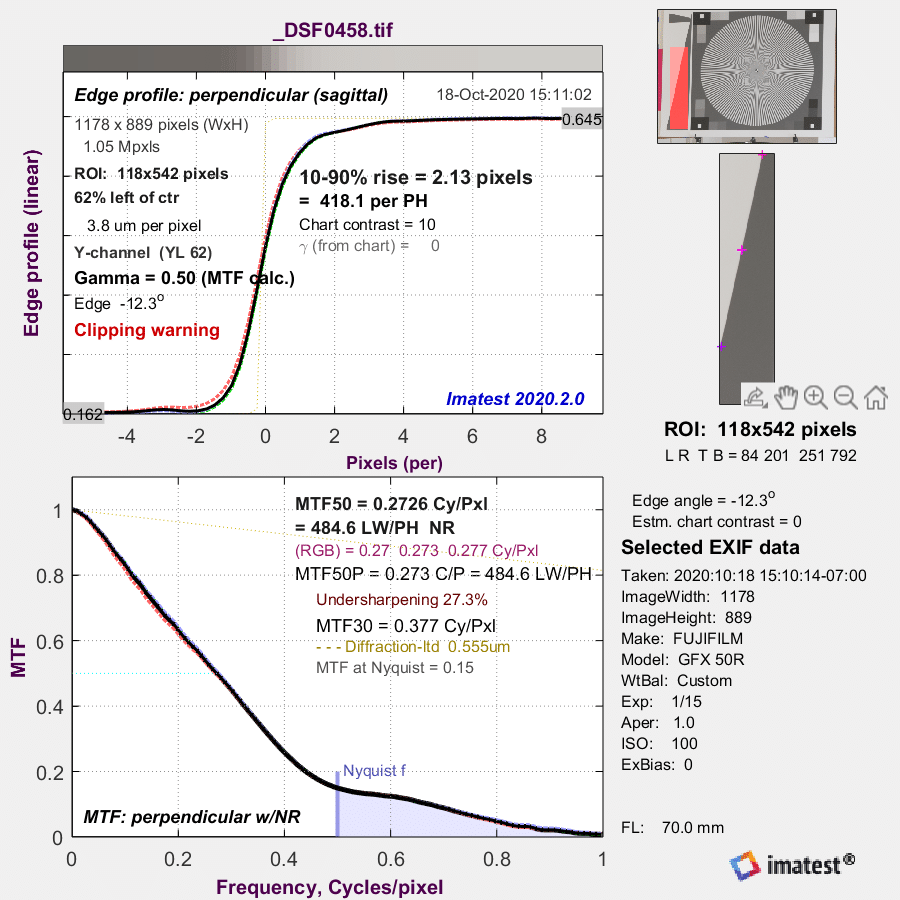
Looks like f/8 is the sweet aperture for this lens. It also looks like there’s some room for movements.
I couldn’t get the Siemens star target to work right in the corners on this test. Sorry.
Oskar Ojala says
I have one of these lenses around from when I had the time to do closeups. I consider it a very good closeup lens and since the 45 mm lens of the same series and 120 mm Schneider were also good, I think Schneider’s higher end lenses are worth using. However for longer distances I remember (and I haven’t tried recently) a slight loss of acuity, but with a rather pleasing overall look.
Dave Chew says
Hi Jim,
Appreciate these tests. I’ve always wondered if this lens is the same as the “Apo-Digitar 4.5/90.” The official MTF cannot be directly compared, since the wavelengths (and weights), focus distances and diagonals are different. Also, the dimensional information is slightly different between the two. However, the MTFs are pretty similar.
The Componon info is here: https://schneiderkreuznach.com/application/files/6915/4115/3569/1004531_Apo-Componon_4-5_90.pdf
Apo-Digitar here:
http://www.alpa.ch/_files/90N_MTF.pdf
I have the 90 AD. It would be fun to compare the two some day.
Dave
Paul R says
I used the 150mm version of this lens for enlarging. It was sharpest corner-to-corner at f11. Sharper in the central areas at f8.
The Schneider engineer I spoke with said that this lens was strongly optimized for 10X enlargements, which was much bigger than I ever did. Most of my work was 1.5X to 3X. So I wasn’t using it to its best advantage.